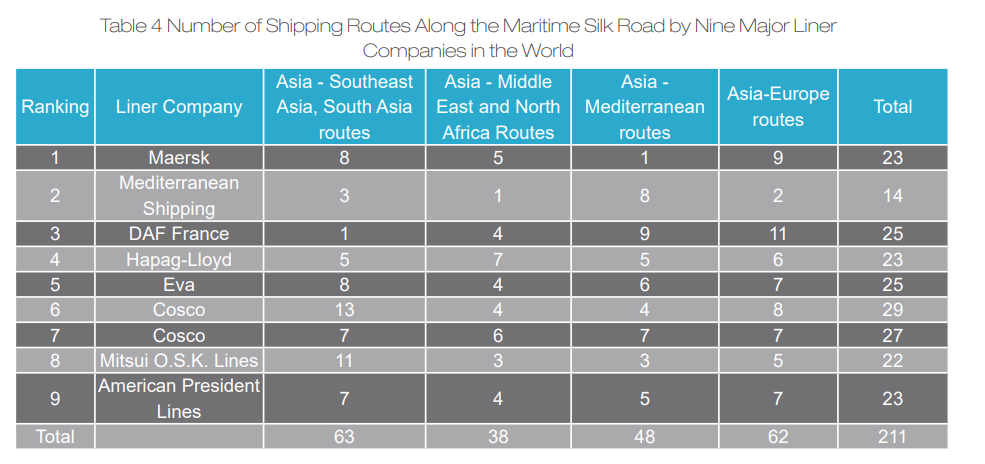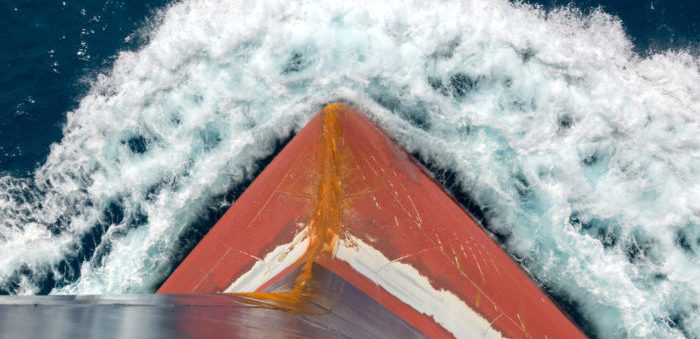Since the initial proposal of the “21st-Century Maritime Silk Road” global concept by China in October 2013, it has received positive responses from many countries around the world; and route network for the maritime silk road has become more distinct, argue Xinhua and The Baltic Exchange in their latest International Shipping Centre Development Index report.

- The China-Middle East, North Africa route and Mediterranean route have relatively wide coverage with a higher number of main calling ports and more countries along the routes.
- On the other hand, the ChinaSoutheast Asia route and China-South Asia route comprise of a smaller number of shipping routes and relatively lower growth in trade volumes compared to other regions.
According to statistics on shipping routes of various liner companies, the nine major liner companies have opened up more shipping routes between Asia-Southeast Asia and South Asia. There is a huge potential for development of the China-Southeast Asia and China-South Asia routes in the future.

Environmental Analysis for Shipping Along the Maritime Silk Road

- The quality of port infrastructure is used to measure the perceptions of corporate executives about their port facilities.
- The data was derived from Executive Opinion Surveys conducted over the past 30 years by the World Economic Forum and its 150 partner research institutes
- The 2009 survey involved more than 13,000 respondents from 133 countries.
- The sample surveys adhered to a two-tier model that is based on the size of the company and the industry in which it operates.
- Data was collected via online surveys or face-to-face interviews.
- The survey responses were aggregated using industry-weighted averages.
- The most recent year data is combined with the previous year to create a two-year moving average.
- The score ranges from 1 (extremely undeveloped port infrastructure) to 7 (Highly developed and efficient port infrastructure that is of international standard).
- Respondents from landlocked countries were asked about the availability of port facilities (1 = very poor availability; 7 = highly available).
- On the whole, quality of port infrastructure of sampled ports of countries (or regions) along the Maritime Silk Road has been relatively stable.
- The quality of port cities in China, Arab Republic of Egypt, India and Russia has been improving continuously.

- On the whole, there was improvement in efficiency of customs clearance for ports along the Maritime Silk Road.
- Customs procedures in Hong Kong, Singapore, and the United Arab Emirates have been relatively efficient, and they have maintained at a relatively high level of above 5.5.
- The efficiency of customs clearance in port cities in Russia, China and India has been improving; the upward trend was evident.
- In recent years, various port cities have continuously exploited deep integration of intelligent technologies with port businesses in order to simplify custom clearance procedures and complex logistic problems. Such effort has laid a solid foundation for significant improvement in customs clearance efficiency.
Accelerated development in Asia-Pacific Shipping was one of the five key global trends considered in the report, as increasing trading and rising economic strength of the Asia-Pacific region are the driving forces in shifting the international shipping centre eastward, with shipping resources further concentrated in Asia.

































































